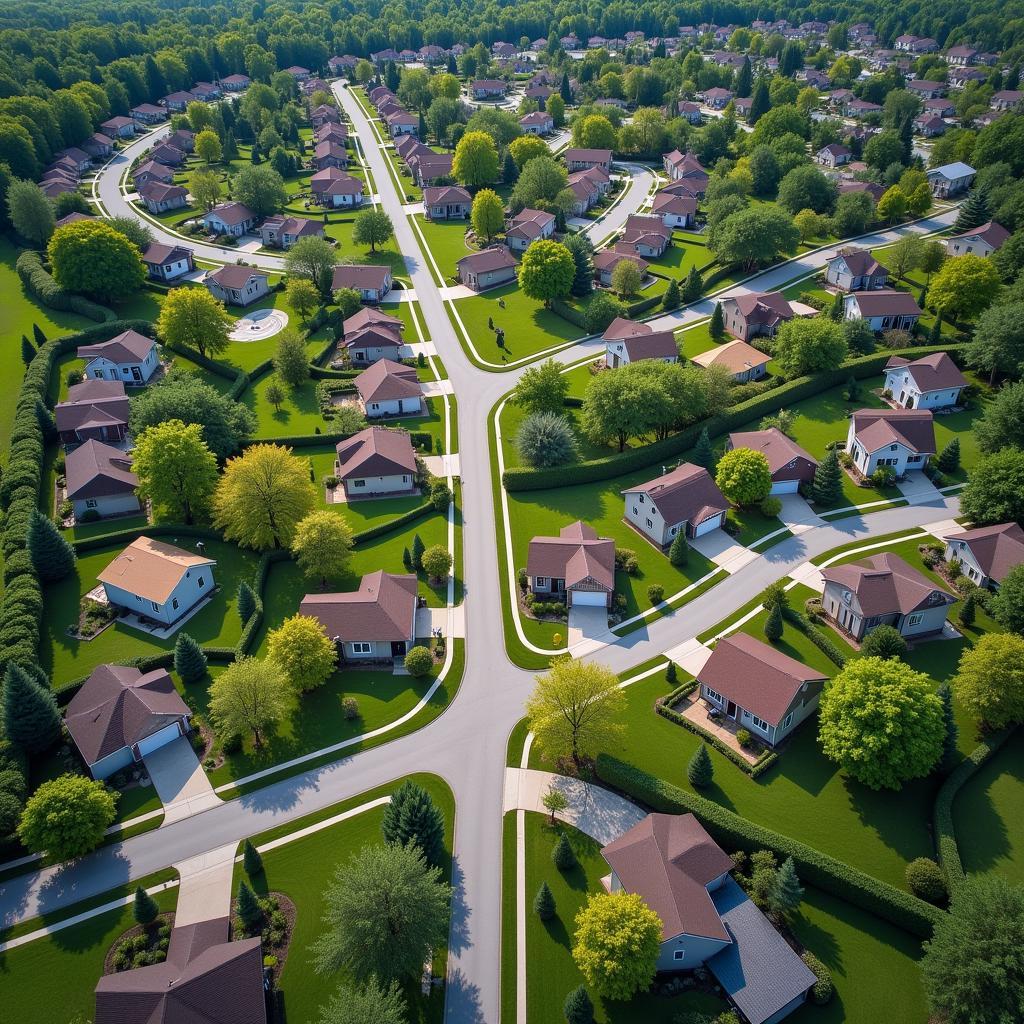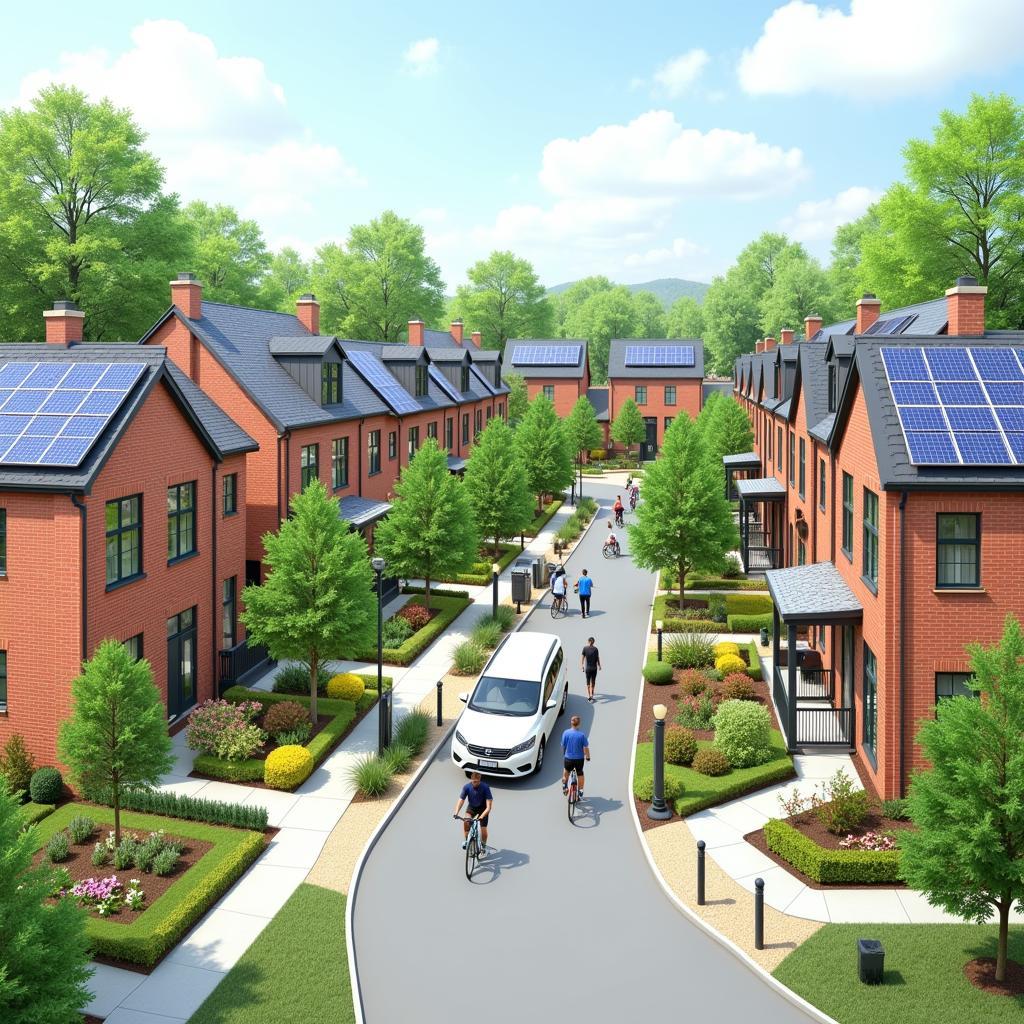Exploring the Best Neighborhood Layouts
November 11, 2024Neighborhood Layouts significantly impact our daily lives, affecting everything from commute times and access to amenities to the sense of community and safety we experience. Whether you’re looking to move, researching urban planning, or just curious about different neighborhood designs, understanding the various layouts can provide valuable insights.
Understanding Different Neighborhood Layouts
Neighborhood layouts are designed with various goals in mind, from maximizing green space to promoting walkability and reducing traffic congestion. Let’s explore some of the most common types of neighborhood layouts and their key characteristics.
Grid Layouts: Simple and Efficient
Grid layouts, characterized by straight streets intersecting at right angles, are one of the oldest and most common neighborhood designs. This layout facilitates easy navigation and efficient land use. However, grid layouts can sometimes feel monotonous and lack a distinct character.
Cul-de-sac Layouts: Prioritizing Privacy
Cul-de-sacs are characterized by dead-end streets, often circular, that promote a sense of privacy and reduce through traffic. This design is often favored by families with young children. However, cul-de-sacs can sometimes lead to longer commutes and limit connectivity to other parts of the neighborhood.
Curvilinear Layouts: Embracing Natural Topography
Curvilinear layouts utilize winding streets and curves, often following the natural contours of the land. This design can create a more aesthetically pleasing and organic feel. It can also help to slow down traffic, enhancing safety for pedestrians and cyclists. However, navigation can be more challenging in curvilinear layouts.
 Curvilinear Neighborhood Layout Example
Curvilinear Neighborhood Layout Example
Mixed-Use Layouts: Integrating Residential and Commercial Spaces
Mixed-use layouts combine residential areas with commercial spaces, such as shops, restaurants, and offices. This design promotes walkability, reduces reliance on cars, and creates vibrant, lively neighborhoods. However, managing noise levels and parking can be a challenge in mixed-use developments.
Traditional Neighborhood Development (TND): A Focus on Community
TNDs aim to recreate the walkable, mixed-use neighborhoods of the past. They typically feature a central public space, a mix of housing types, and interconnected streets that prioritize pedestrians and cyclists. These layouts encourage social interaction and a strong sense of community.
Planning for the Future: Sustainable Neighborhood Layouts
As concerns about climate change and sustainability grow, neighborhood layouts are increasingly incorporating green building practices, renewable energy sources, and strategies to reduce carbon footprints. These sustainable neighborhood layouts aim to create environmentally friendly and resilient communities.
What are the advantages of different neighborhood layouts?
Each neighborhood layout offers distinct advantages. Grid layouts provide easy navigation and efficient land use. Cul-de-sacs prioritize privacy and safety for children. Curvilinear layouts enhance aesthetics and slow down traffic. Mixed-use developments promote walkability and vibrancy. TNDs foster a strong sense of community. Sustainable layouts minimize environmental impact.
 Sustainable Neighborhood Layout Example
Sustainable Neighborhood Layout Example
Conclusion
Neighborhood layouts play a crucial role in shaping our quality of life. By understanding the characteristics and advantages of different designs, we can make informed decisions about where we live and how we plan for the future. Neighborhood layouts continue to evolve, reflecting changing societal needs and priorities. Choosing the right neighborhood layout contributes to a more fulfilling and sustainable living experience.
FAQs
- What is the most common neighborhood layout? Grid layouts are the most common due to their simplicity and efficiency.
- What are the benefits of a cul-de-sac? Cul-de-sacs offer increased privacy and reduced through traffic.
- What is a mixed-use neighborhood? A mixed-use neighborhood combines residential and commercial spaces.
- What is the goal of a TND? A TND aims to create walkable, mixed-use communities with a strong sense of community.
- What are sustainable neighborhood layouts? Sustainable neighborhood layouts prioritize environmental considerations and aim to reduce carbon footprints.
- What are the benefits of curvilinear layouts? Curvilinear layouts are aesthetically pleasing and help to slow down traffic.
- How do neighborhood layouts affect commute times? Neighborhood layouts can significantly impact commute times, with some designs promoting walkability and others requiring greater reliance on cars.
For any assistance, contact us at Phone Number: 0915117113, Email: [email protected] or visit our address: To 3 Kp Binh An, Phu Thuong, Vietnam, Binh Phuoc 830000, Vietnam. We have a 24/7 customer service team.